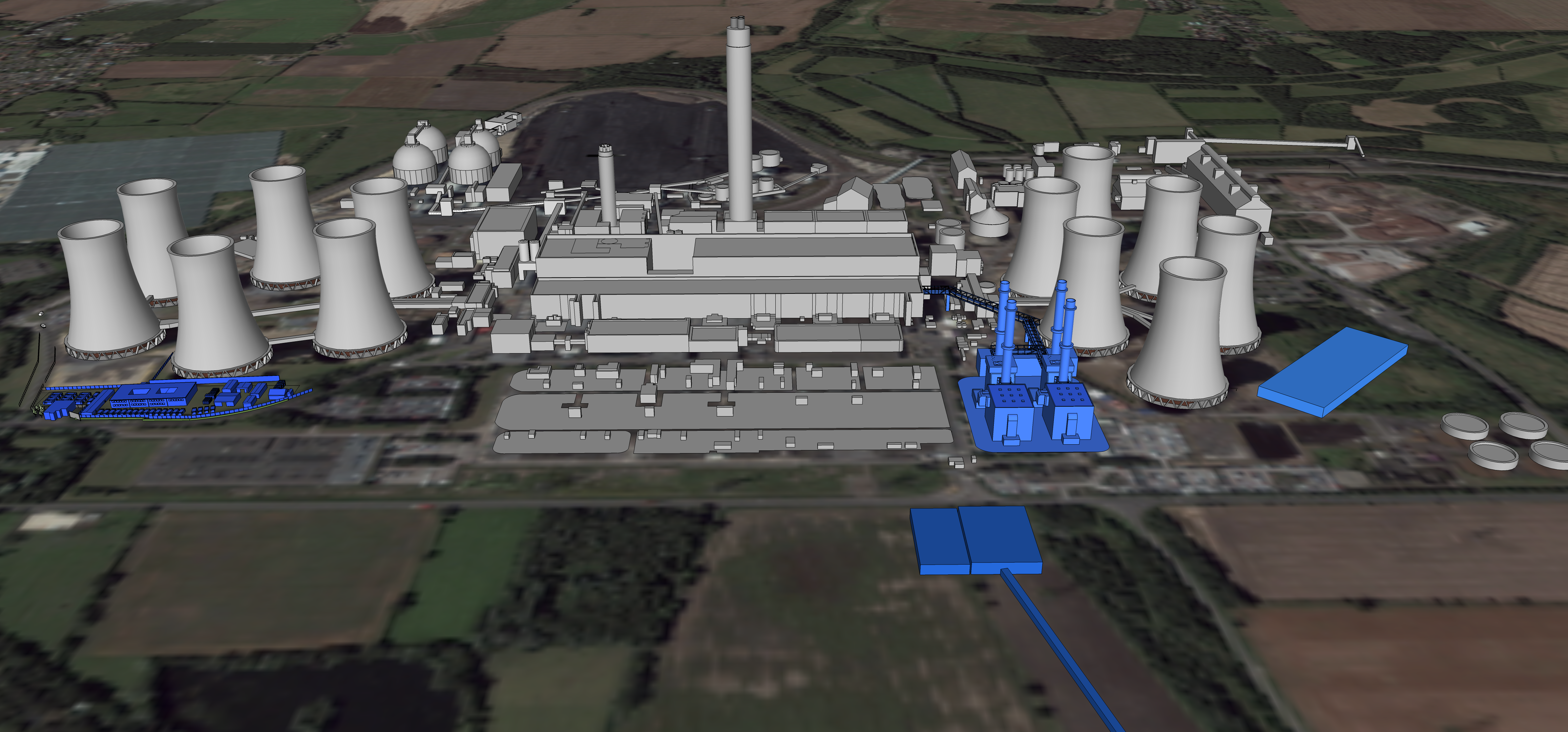
An idea to generate renewable electricity for use in a York school while also establishing zero carbon transport between its two sites has won first place in a regional competition sponsored by Drax Power, with a total prize fund of £10,000.
The Project Reinvent Challenge invited pupils across Yorkshire, aged 11-19 to use their learning and knowledge in STEM subjects (science, technology, engineering and maths) to develop a workable idea to help improve life in their community.
A team of five Year 7 pupils from All Saints School in York impressed judges with their entry ‘Dynamo’, which plans to create a free cycle hub providing 40 bikes for teachers, pupils and visitors to travel the half mile between the school’s two campuses.
Each bike will be fitted with a ‘bottle’ dynamo which allows energy generated from cycling to be stored. The dynamos are then hooked up to transfer the stored energy to batteries which will be connected into the school’s electricity distribution network.
Drax awarded the winning idea £6,000 to help it get started, with the remaining prize fund being split between the runners up.
All Saints teacher Sarah Bilton said: “This is a fantastic achievement. We’re very proud of our pupils and the hard work, thought and determination they have shown.”
She added: “This challenge really got pupils thinking and was a great opportunity to help their understanding of enterprise and investigate eco-friendly ways to benefit the community.
“Lots of people drive between the sites, or of course have to walk. This will simplify and speed up getting from one side of the school to the other, and in a way that’s better for the environment. It will be useful to the whole school community; I can’t think why someone hadn’t thought of this before!”
Drax Visitor Centre manager and member of the judging panel, Rachael Baldwin said: “All four finalists presented well thought out, creative ideas, but the Dynamo team really impressed us with the technical thinking behind their project as well as coming up with an idea that would benefit their school and local community.”
The team was presented with a trophy by Andy Koss, Drax Power CEO.
He said: “It’s been tremendously rewarding to see young people harness their imagination and STEM learning to find new ways to support their local communities.
“The diverse range of ideas we have seen and presented by the competition finalists shows there is plenty of innovation within schools and colleges across Yorkshire. We hope this will inspire these students to pursue careers using STEM subjects.”
The runners-up were Barlby High School, near Selby with their idea for a ‘Learning Garden’ based around science; Nidderdale High School in Pateley Bridge with designs for ‘3 Peaks’, a new climbing wall; and Scarborough University Technical College with its ‘Life Skills Centre’ to support STEM knowledge in adult learning.
The Project Reinvent Challenge was supported by the North Yorkshire Business and Education Partnership (NYBEP), a social enterprise based in York that specialises in engaging employers with education to help young people prepare for the workplace.
Ends
Media contacts:
Ali Lewis
Drax Group Head of Media Relations
E: ali.lewis@drax.com
T: 01757 612165
Jessica Gorton
Drax Group Press Officer
E: jessica.gorton@drax.com
T: 01757 612848
About Project Reinvent Challenge
The Project Reinvent Challenge is part of Drax’s community investment plan ‘Project Reinvent’ – a programme of activity supporting schools and local projects. Inspired by the company’s own reinvention from a traditional coal-fired power station into a reliable new source of renewable energy, the programme aims to bring new energy to the people and organisations that can change the local area for good.
A total of 50 schools across Yorkshire entered the challenge. The finalists were selected at Inspirations 2017, an annual event billed as the biggest celebration of STEM education and held at Yorkshire Air Museum in June. Teams then had to present their ideas to a panel of judges at the grand final held in the Visitor Centre at Drax power station.
About Drax Group
Drax Group plc plays a vital role in helping change the way energy is generated, supplied and used as the UK moves to a low carbon future. Drax operates the largest power station in the UK, based at Selby, North Yorkshire and supplies 7 percent of the country’s electricity needs. The energy firm converted from burning coal to become a predominantly biomass-fuelled electricity generator. Drax is the biggest single site renewable generator in the UK and the largest decarbonisation project in Europe. Its 2,300-strong staff operate across three principal areas of activity – electricity generation, electricity sales to business customers and compressed wood pellet production.
The Group includes:
Drax Biomass, based in the US and manufactures compressed wood pellets produced from sustainably managed working forests.
Haven Power, based in Ipswich, providing businesses with electricity.
Opus Energy, based in Oxford, Northampton and Cardiff, providing electricity and gas to businesses.
Billington Bioenergy, based in Liverpool with depots across the UK, is one of the leading distributors of wood pellets for sustainable heating in the UK.
For more information visit www.drax.com
About NYBEP
NYBEP is a not-for-profit social enterprise that has specialised in engaging employers in education for over 20 years. NYBEP is aimed at helping young people to acquire the skills and knowledge that prepare them for the workplace and inspire them to plan for and achieve a successful future.










